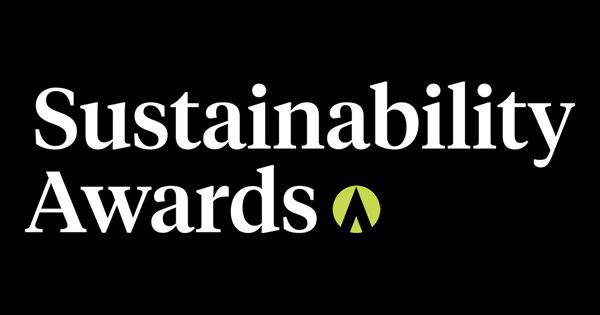In a remarkable display of dedication to sustainable design, the entry portal for the 2024 Sustainability Awards has been inundated with exceptional submissions from across the nation.
These entries showcase projects, individuals, and products that are not only raising the bar in Australia but also setting new global standards in sustainability.
For those with outstanding sustainable initiatives, exciting news awaits! The entry period for this year’s awards has been extended by 2 weeks, providing more time to participate in this prestigious competition.
The new deadline for submitting entries to the Sustainability Awards is now Wednesday, July 10!

So Why Enter?
As the longest-running awards program of its kind on the continent – 18 years to be precise - the Sustainability Awards celebrate those who prioritize sustainable design and architecture. With 18 categories to choose from, winning an accolade through these awards offers significant recognition for impactful projects or a notable career in the industry.
If you would like to enter, now it's time to:
- Curate your photos
- Prepare your entry information
- Submit your application
This is your chance to win at the 2024 Sustainability Awards and contribute to shaping the future of Australia’s built environment. Showcase your commitment to sustainable practice to the wider industry, gain recognition, and celebrate at the gala in November, where the winners will be announced.

The 18 categories for the 2024 Sustainability Awards are:
1. Emerging Sustainable Architect / Designer
Open to architects / designers in their first five years of their career and recognises an outstanding achievement or development in the field of sustainable and / or environmental architecture planning or design across any of the building categories.
2. Lifetime Achievement
A person who has over their career, shown exemplary efforts in advancing the progression of the sustainability in Australia.
3. Commercial Architecture (Large)
A Class 5, 6, 7 or 8 building used for professional and / or commercial purposes of over 500sqm in floor size.
4. Commercial Architecture (Small)
A Class 5, 6, 7 or 8 building used for professional and / or commercial purposes of under or equal to 500sqm in floor size.
5. Education & Research
A childcare centre, preschool, primary, secondary, or tertiary educational facility or a facility where an educational institution is a partner.
6. Multi-Residential Dwelling
The design of a new townhouse, duplex or residential complex that contains multiple residential dwellings. Projects nominated under this category are classifiable as Class 2 or Class 3 buildings.
7. Single Dwelling (New)
The design and construction of a single-residential building to which a Class 1a Building category.
8. Single Dwelling (Alteration)
Extensions and/or alterations to at least 50 percent of a Class 1a building.
9. Adaptive Reuse (Alteration/Addition)
Recognises the adaptive reuse of a building (heritage and/or new) that has minimal impact on the historical significance of the building and its setting, while also pursuing a design that is sympathetic to the building to give it a new purpose.
10. Landscape & Urban
Buildings or non-building projects at the intersection of architecture, landscape design and urban planning. Examples include parks, pedestrian bridges and walkways, pools, shelters, picnic facilities, toilet blocks and playgrounds. Can also include green roofs, green walls and other urban garden and similar installations.
11. Interior Design
A renovation or fit-out of the interior of an existing building where the sustainable design is involved with such factors as determining the efficient and effective use of space, selecting construction materials that offer low environmental impact and lowering pollution, waste, and the lowering of the overall energy consumption.
12. Public Building
A building or facility or artwork which primarily services or is used by the public except educational facilities. This can include hospitals, medical centres, sports ovals and facilities, transport hubs, parliament houses, zoological gardens, museums, government department buildings and religious structures.
13. Hospitality & Tourism
Examples of Hospitality & Tourism Design include projects that help create locally owned business and employment opportunities, environmentally friendly operations, education and awareness programs, energy and resource conservation, and waste & carbon dioxide reduction.
14. Small Sustainable Practice of The Year
This award us open to all architecture and design firms with 10 or less staff and recognises and rewards their achievements including those that demonstrate alignment with the UN 17 SDGs by integrating sustainability principles and practices across business activities and outcomes, such as sustainable energy, climate resilience, environmental and social best practice, environmental and social innovation, and gender and economic inclusion.
15. Green Building Material / Product
A building product that is renewable, environmentally responsible and where the impact is considered over the entire lifetime of the product.
16. International Design
Awarded to the best in environmentally responsible designed project from around the world.
17. Editor’s Choice
(Social & Community Outcomes) Editor’s Choice is an award given by the Architecture & Design editorial team. All shortlisted projects are assessed for their suitability for this award based on their contribution to and consultation with their local community.
18. Best of the Best
Selected from among all the category winners based on both sustainable outcomes and aesthetics and/or innovative design principles.
Don't miss this extended opportunity to highlight your sustainable achievements and join the cohort of innovators leading the way in 2024.
To enter, go to https://www.sustainablebuildingawards.com.au/


